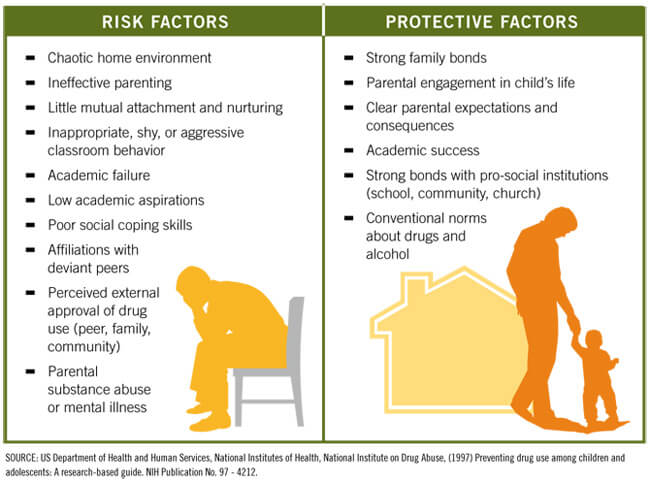Preventing mental and/or substance use disorders and related problems in children, adolescents, and young adults is critical to Americans’ behavioral and physical health. Behaviors and symptoms that signal the development of a behavioral disorder often manifest two to four years before a disorder is present. In addition, people with a mental health issue are more likely to use alcohol or drugs than those not affected by a mental illness. Results from the 2014 NSDUH report showed that of those adults with any mental illness, 18.2% had a substance use disorder, while those adults with no mental illness only had a 6.3% rate of substance use disorder in the past year. If communities and families can intervene early, behavioral health disorders might be prevented, or symptoms can be mitigated.
The Institute of Medicine and National Research Council’s Preventing Mental, Emotional, and Behavioral Disorders Among Young People report – 2009 (link is external) notes that cost-benefit ratios for early treatment and prevention programs for addictions and mental illness programs range from 1:2 to 1:10. This means a $1 investment yields $2 to $10 savings in health costs, criminal and juvenile justice costs, educational costs, and lost productivity.
Prevention is part of a broad continuum of care for substance use for people of all ages. Experts attest that an optimal mix of prevention interventions is required to address substance use issues in communities, because they are among the most difficult social problems to prevent or reduce. A public health approach, which presents solutions to all factors that influence a health problem, is a natural fit for related health and social problems. The public health approach uses prevention, intervention, and treatment to deal with these health problems. An accredited substance abuse prevention agency considers comprehensive solutions, including research-based curriculum delivered by certified prevention specialists, that fit the particular needs of their communities and population, within cultural context, and take into consideration unique local circumstances, including community readiness.
Effective drug and alcohol abuse prevention is everyone’s responsibility — prevention agencies, adolescents, schools, parents and communities.

